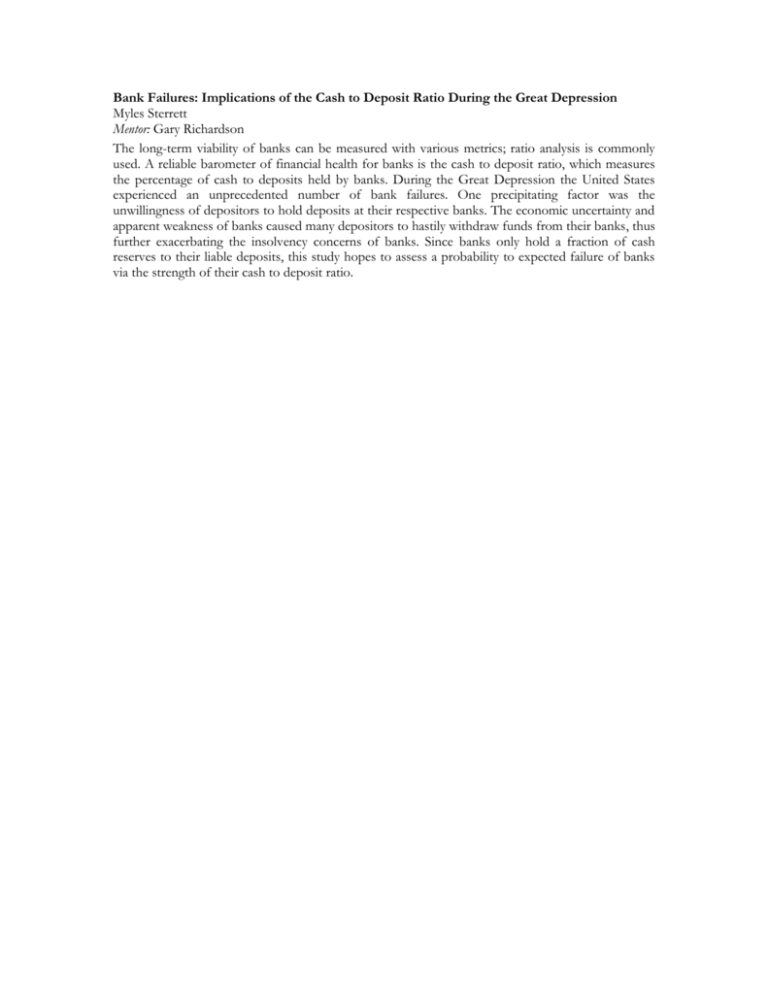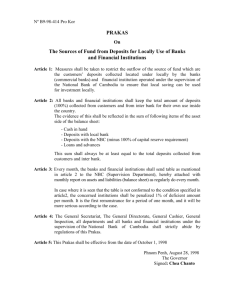Implications of the cash to deposit ratio during the Great Depression
advertisement

Bank Failures: Implications of the Cash to Deposit Ratio During the Great Depression Myles Sterrett Mentor: Gary Richardson The long-term viability of banks can be measured with various metrics; ratio analysis is commonly used. A reliable barometer of financial health for banks is the cash to deposit ratio, which measures the percentage of cash to deposits held by banks. During the Great Depression the United States experienced an unprecedented number of bank failures. One precipitating factor was the unwillingness of depositors to hold deposits at their respective banks. The economic uncertainty and apparent weakness of banks caused many depositors to hastily withdraw funds from their banks, thus further exacerbating the insolvency concerns of banks. Since banks only hold a fraction of cash reserves to their liable deposits, this study hopes to assess a probability to expected failure of banks via the strength of their cash to deposit ratio.











